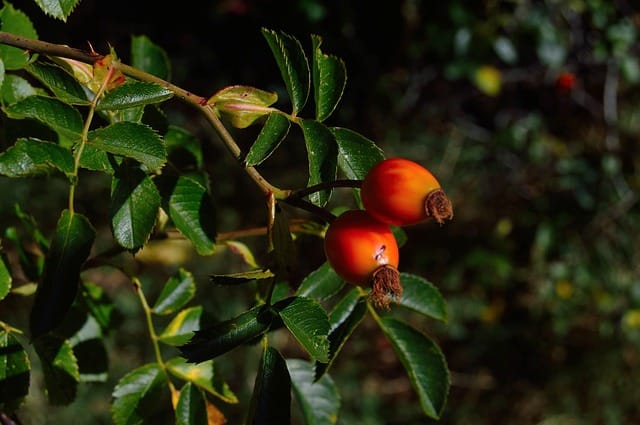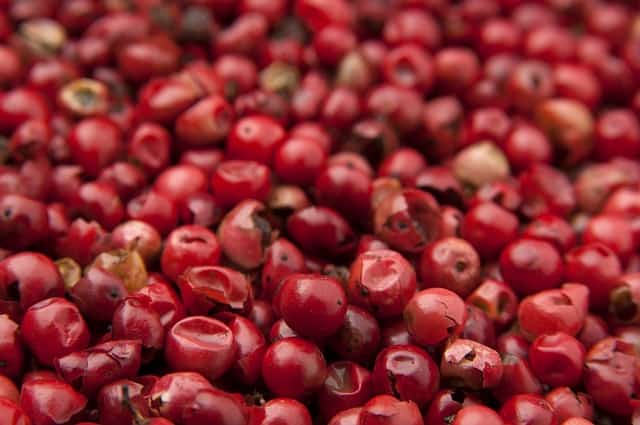Goji Berry plant shows dying signs typically due to Improper Watering. Anthracnose and Powdery Mildew are caused by fungal infections. Goji Berry plant shows dying signs when it doesn’t get the required sunlight. Goji Berry plant could also show dying signs due to transplant shock.
Goji berries are tiny red fruits that are very nutritious. They add color not only to your garden but also to your dinner plates!
Is something bothering your Goji berry plants? Let’s look at how you can fix it!
| Symptoms of Goji Berry plant | Reason for Dying Goji Berry plant |
|---|---|
| goji berry leaves turning white | Goji berry leaves turn white when the plant is infected by Powdery Mildew. |
| goji berry leaves turning yellow | Goji berry leaves become yellow when the plant is affected by Septoria fungi. Nutrient deficiency can turn leaves yellow too. |
| goji berry leaves turning purple | Goji berry leaves turn purple when the plant goes into a transplant shock. |
| goji berry leaves wilting | Goji berry leaves wilt when you don’t water them regularly. |
| goji berry leaves turning black | Goji berries turn black due to a disease called Anthracnose. |
| goji berry not bearing fruit | Goji berry plants do not bear fruit if they don’t get adequate sunlight. |
Let’s learn about each problem in detail and learn how to fix them.
Powdery Mildew on Goji Berry Leaves
Goji berry leaves turn white when the plant is infected by Powdery Mildew. A white, powdery layer forms on the affected leaves of the plant.
The leaves become curled. Powdery mildew affects your plants so badly that they get stunted and stop flowering.
This disease is usually seen in humid weather conditions. This happens if the goji berry plant is suffocated by other plants.
How to revive a Goji Berry plant with white leaves?
Neem oil can be used to treat an affected plant. Spray it on the affected leaves. This disease can be prevented by pruning and keeping your garden beds weed-free.
Increase air circulation around the Goji Berry plant to prevent fungal infections. Water only the base of the Goji Berry plant.
Septoria Fungi Goji Berry Plant
Goji berry leaves become yellow when the plant is affected by Septoria fungi. Both overwatering and underwatering can cause foliage yellowing in Goji berry plants. Nutrient deficiency can turn the leaves yellow in the Goji Berry plant.
Affected leaves have yellowish spots on them. They usually appear on lower leaves. Eventually, this blight causes defoliation and stunted growth.
How to revive a Goji Berry with yellow leaves?
If it’s in the early stages, you can prune the affected leaves. Chemical/Organic fungicides can be used to treat the disease.
See if the soil/potting mix lacks any essential nutrients. Add the required nutrient to the soil/potting mix through suitable fertilizer.
Improper Watering
Goji berry leaves wilt when you don’t water them regularly. They do it to reduce the evaporation of water. In the first 6 months of planting goji berries keep the soil moist but not soggy.
If the plants still do not recover then it’s better to cover them(using shade cover) from sunlight during the hotter hours of the day.
How to revive a Goji Berry with wilting leaves?
Follow the below steps to revive your Goji Berry plant with wilting leaves.
- Adjust watering habits.
- Ensure well-draining soil.
- Provide adequate sunlight
- Trim any wilted branches.
Transplant Shock in Goji Berry
Goji berry leaves turn purple when the plant goes into a transplant shock. Goji berry leaves also turn purple when the soil is too acidic.
After you transplant the goji berry, water it well and keep it shaded for the first week. Let the plant get acclimated to the new conditions.
The leaves may fall off but don’t worry as new leaves that are suitable for the new environment will grow soon.
In rare cases, this can also be caused by diseases and drought.
How to revive a Goji Berry plant with purple leaves?
To fix transplant shock in a Goji Berry plant, ensure it’s well-watered, shielded from strong sunlight for a few days, and given a gentle boost of balanced fertilizer. Proper care will help it bounce back to vitality.
Anthracnose in Goji Berry Plant
Goji berries turn black due to a disease called Anthracnose. These black spots appear just as the fruit begins to ripen.
Initially, these spots are small, then they spread to the entire fruit, rotting it. Anthracnose attacks in hot and humid conditions.
To treat the diseased plant you can spray copper-based fungicide on the infected parts of the plant. Be careful not to over-spray as it can be toxic.
Preventive measures
To avoid this, plant your goji seeds spaciously. Keep a clean garden that is free of diseased plant debris and remove weeds as soon as you see them.
Use organic mulch to prevent spores from falling onto leaves.
Inadequate Sunlight
Goji berry plants do not bear fruit if they don’t get adequate sunlight. They also fail to bear fruit when they don’t get enough water. Goji berries start bearing fruit after 2 to 5 years.
If yours is a warm place then you should choose a variety that can thrive in warm places. Certain varieties give out more fruits easily.
Many people from the Pacific Northwest have told me that it’s hard to grow goji there as it’s pretty damp. If you are from such areas it’s better not to plant them in the first place.
Let’s look at how to care for your goji plants.
Fruit Fly Infestation
The Drosophila Suzukii, also known as the spotted winged drosophila, poses a threat to fruiting plants like goji berries.
Only males have spots, while females use ovipositors to lay eggs inside fruits. These eggs mature into adults in 8-14 days. The real damage is done by maggots inside berries, causing fruit decay within 24 hours.
Infested crops can’t be salvaged and should be bagged or incinerated to prevent the cycle from continuing on other plants.
To prevent infestation, use fine mesh netting to protect fruiting plants from these tiny but destructive fruit flies.
Goji Gall Mite Infestation
Goji berry plants undergo two defoliation cycles each year, shedding some leaves during the summer season. During these periods, gall mites migrate to the woody parts of the plant and subsequently feed on the newly sprouted leaves.
Their impact is predominantly confined to the leaves, resulting in the formation of visible leaf galls, resembling raised bumps on the leaf surface, where the mites reside.
These mites are minuscule and go unnoticed, with symptoms manifesting as discolored bumps on the leaves, starting as pale yellow and transitioning to a reddish-pink hue over time.
Consequently, goji berry plants exhibit the presence of elevated spots, akin to blisters, ranging from yellow to reddish-pink, scattered across their foliage.
In the early stages of infestation, the impact on fruit production is minimal. However, as infestations progress, substantial leaf damage occurs, leading to a decline in chlorophyll content.
This reduction in chlorophyll synthesis results in slower fruit production and the development of smaller berries. The infected plant can be treated using insecticidal soap, or in severe cases, pesticides may be necessary.
When should Goji Berries be pruned?
Pruning is necessary to keep a plant healthy and achieve desired results. Proper care should be taken and a schedule should be followed to get the best results.
During the first year
Do not do any pruning in the first year, let it grow as a bush. You should not disturb it in the first year.
From 2nd to 5th year
I recommend that you cut only lateral stems that are below 50 cm and leave only one strong stem for future growth purposes.
Cut all the branches that are at an angle of more than 45° to the main shoot and leave only 3 to 4 branches that are at a lesser angle. These branches will be your fruit-bearing branches.
The strongest stem will be allowed to grow as the main stem. During winter, cut any dead, dying branches off.
Prune off any actively growing lateral branches so as to promote new branch growth. This ensures that you get maximum fruit.
In summer, prune the top of the plant to keep it at the desired height. Cut any sprouts near the base of your plant to control unwanted plant growth.

How much water do Goji berries need?
First, make sure your goji plants are in the soil where there’s proper drainage. Just give your goji plants adequate water.
Here is a rule of thumb.
For the first 6 months make sure your soil is moist. At any time you don’t want your soil moisture to go below 40%. You can check the moisture in the soil even with your fingers.
It’s better to give them 1-1.5 inches of water per week. Do not water them at one go, it’s better to spread your watering sessions over the week.
Where do Goji berries grow best?
They spread through runners. That’s why Goji berries need a lot of breathing space, so keep that in mind when planting these in your garden.
For these plants, full sun is the best but it can tolerate some shade. It can’t thrive in the Pacific Northwest regions of the US.
Wrappin’ it up
Take regular care of your goji berry plants and pluck out weeds around the plants as soon as you see them. Mulch the plant beds well. Water regularly and prune when needed.
I wish you a Gojiful Garden ;))

